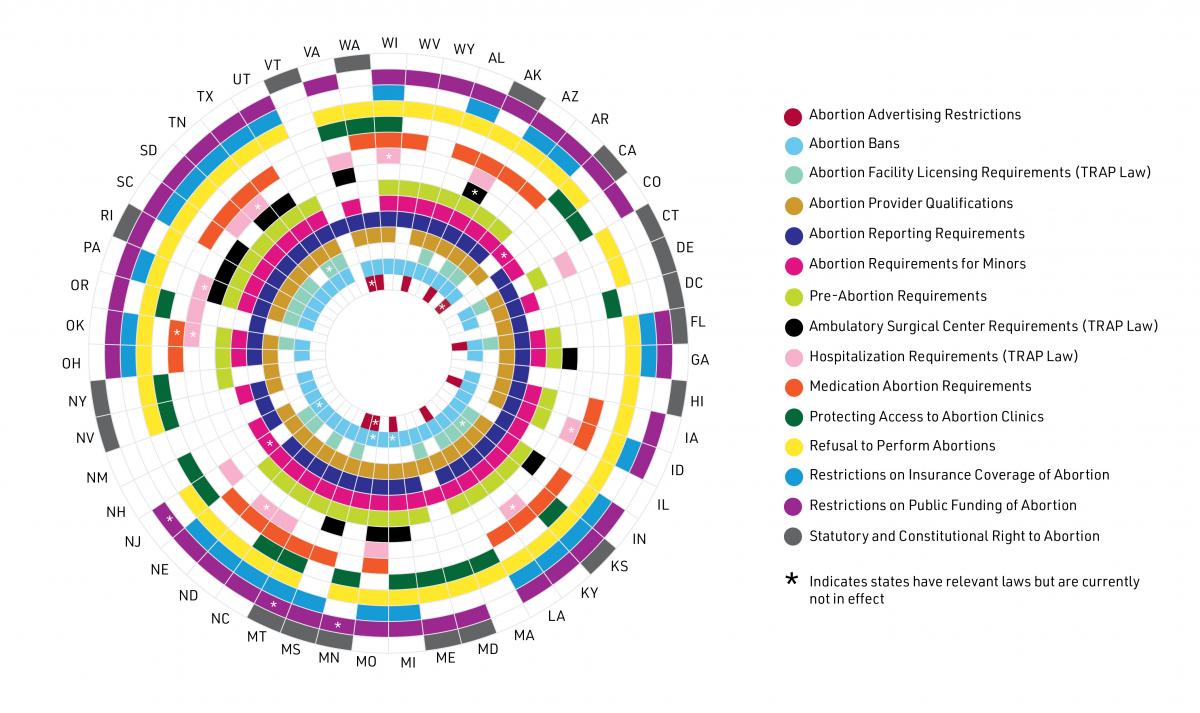The legal limitations restricting access to reproductive health care in the United States continue to expand at a significant pace, according to updated data released today by the Center for Public Health Law Research at Temple University on LawAtlas.org. The data now capture comprehensive details of abortion laws from December 2018 through October 2021.
“States have continued to pass new laws significantly limiting access to essential abortion care,” said Adrienne Ghorashi, Esq., a program manager at the Center for Public Health Law Research and lead researcher on this project. “Amid a global pandemic and with the lack of federal protections, the pace and breadth of this movement is especially alarming.”
Despite the recent suspension of FDA in-person dispensing requirements for mifepristone, state legislatures and the courts have enacted medication abortion “reversal” laws, added in-person dispensing requirements, and banned the mailing of abortion pills.
Abortion bans have been a particularly active area of law since 2019, according to the data. Pre-viability limits, the subject of the recently argued Supreme Court case Dobbs v. Jackson Women's Health Organization, have become more prominent:
- Of the 41 states prohibiting abortion after a certain point in pregnancy, 25 states have pre-viability restrictions, ranging from a total ban on abortion at any point in pregnancy in two states (up from one state, Alabama, in 2020) to the more common 20 week bans in 19 states.
- Eleven states now have trigger laws that would ban abortion if Roe v. Wade were overturned, an increase from only three states in 2019.
- Ten states have “fetal heartbeat” bans in 2021 that prohibit abortion after detection of fetal cardiac activity. This is an increase from three states in 2018, though most have been challenged in courts.
- Two states, Montana and South Dakota, now have bans based on the claim that a fetus can feel pain at 20 weeks.
Also relevant to the outcome of the Dobbs case are the several states with “pre-Roe” abortion bans that could potentially be reinstated should Roe v. Wade be overturned. These abortion bans pre-date the 1973 decision protecting pre-viability abortions, but with the status of Roe unclear, states could once again aim to restrict most or all abortions.
The updated data released today capture state statutes, regulations, and court rulings in 15 different legal areas related to abortion, from December 1, 2018, through October 1, 2021. The suite of data includes expanded data on pre-abortion requirements (formerly called the Abortion Waiting Periods dataset). This dataset now more comprehensively captures the requirements an individual seeking an abortion must meet before they can obtain the procedure, including waiting periods, testing, counseling, or ultrasounds.
The data are maintained in partnership with Regulatory Assistance for Abortion Providers (RAAP), a division of Resources for Abortion Delivery (RAD).
Contact
Bethany Saxon
Center for Public Health Law Research
Tel. 215-204-2134
bethany.saxon@temple.edu

